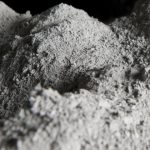Reinforced concrete is widely used for construction on a large scale due to its desirable mechanical properties. Types of steel and non-steel concrete reinforcement are described. Corrosion has an adverse effect on the embedded steel if structures are not properly designed and constructed.

Reinforced concrete, or RCC, is concrete that contains embedded steel bars, plates, or fibers that strengthen the material. The capability to carry loads by these materials is magnified, and because of this RCC is used extensively in all construction. In fact, it has become the most commonly utilized construction material.
Reinforced materials are embedded in the concrete in such a way that the two materials resist the applied forces together. The compressive strength of concrete and the tensile strength of steel form a strong bond to resist these stresses over a long span. Plain concrete is not suitable for most construction projects because it cannot easily withstand the stresses created by vibrations, wind, or other forces.
Performance of Reinforced Concrete
Concrete consists of a cement and stone aggregate mixture that forms a rigid structure with the addition of water. When steel that has a high tensile strength is embedded in concrete, the composite material withstands compression, bending, and tensile stresses. Such a material can be used for making any size and shape, for utilization in the construction.
The main quality of reinforced concrete is similarity of its coefficient of thermal expansion with that of steel, due to which the internal stresses initiated due to variation in thermal expansion or contraction are eliminated.
Secondly, on the hardening of the cement paste inside the concrete, it corresponds to the surface features of the steel, allowing the stresses to be efficiently transmitted between the two materials. The cohesive characteristics between the steel and concrete are enhanced by the roughening of steel bars.
Thirdly, a film is formed on the steel because of the alkaline environment created by lime, due to which the steel becomes extra-resistant to corrosion.

Non-steel Reinforcement – Fiber Reinforced Concrete
Steel cannot be used for concrete reinforcement in some structures like toll booths that are equipped to read radio tags and machines fitted with magnets. In some projects, the life of the structure is more significant than its strength, due to which such reinforcements are used that can resist corrosion and consequently increase the life of the structure.
Thus, reinforcements are used other than steel for these constructions, like plastic reinforcement that can be as robust as steel, and does not require a protective layer to resist corrosion. Such structures are light, have a long life, and are at times more economical.
Another category of non-steel reinforcement is concrete with fibrous material that enhances the structural tensile strength (Fiber Reinforced Concrete). The most common fibers used are glass fibers, synthetic fibers and steel fibers that are normally used for on-ground floors, pavements, and foundations, etc. Other types of fibers used are asbestos fibers that are extremely cheap and carbon fibers that present excellent mechanical properties. Finally there is also the Natural Fiber Feinforced Concrete (NFRC) consisting of cellulose fibers and the Polypropylene Fiber Reinforced (PFR) concrete containing polymer fibers.
Deterioration of Steel Reinforced Concrete Due to Corrosion
If moisture is present, then corrosion of steel embedded in the steel reinforced concrete will be an important concern that would require serious attention, since it has extensive financial implications. Damage due to corrosion of rebar may occur in large structures such as residential buildings, bridges, tunnels, due to which these may also become dangerous if appropriate remedial actions are not taken. Therefore, techniques have been developed that can measure the gravity of rebar corrosive effects in the existing structures, and also to foresee their residual life. Measurements are carried out on the rebar, or on embedded rebar probes, and useful information concerning the extent of corrosive damage can be obtained.



Comments are closed